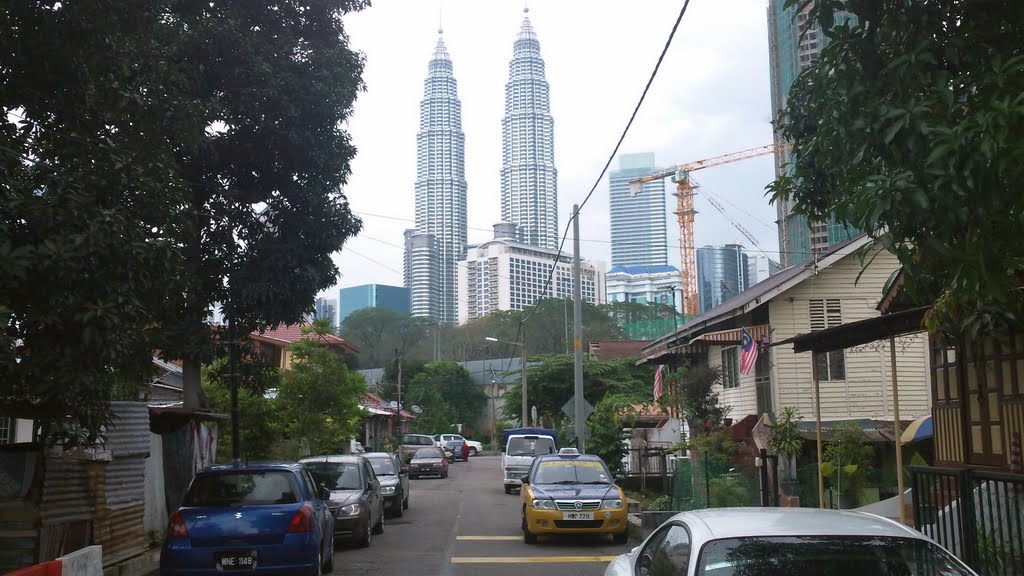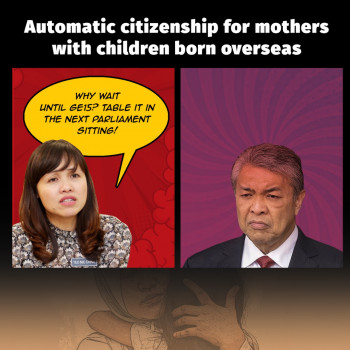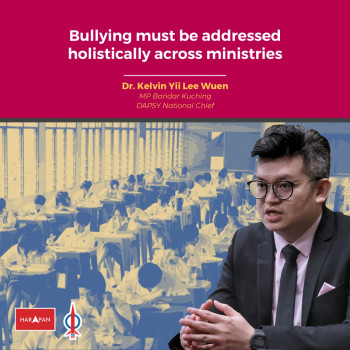by Steven Sim Chee Keong
 Prime Minister Dato Seri Najib Razak will table the 2015 Budget on Friday 10 October 2014, at 4pm in Parliament.
Prime Minister Dato Seri Najib Razak will table the 2015 Budget on Friday 10 October 2014, at 4pm in Parliament.
As usual the whole nation awaits anxiously to hear what the government has in store for the people in the next year. We know so far it has not been good news – GST, price hike, tighter credit etc.
I think it is still not too late for me to propose a title for the Prime Minister’s budget speech, and since I am from Penang, I’ll use bahasa melayu utara: Pi mai pi mai tang tu (roughly translated as, “going everywhere but ended up nowhere”).
The government has been projecting a very positive economy, saying things like “we have full employment” and “household income is now RM5,900 a month”, as well as projecting positive growth of the economy in the coming year.
Yes, these numbers and statistics are not wrong, but all of us know deep in our guts they do not really reflect what is happening on the streets.
What is the problem?
The problem is, the government confused between economic growth and distribution of wealth. As such, every year, the Prime Minister’s budget speech will be peppered with good news of economic growth but yet means nothing to the ordinary citizen – indeed an example of “going everywhere but ended up nowhere”.
Where does the money go?
When we hear of all the growth in the country, the thing that went through many people’s mind is: But where does the money go to?
According to the government’s report, from 2005 to 2013, in the GDP calculated using the income approach, workers compensation is about 31% of the GDP while corporate profit is about 65% and government’s tax revenue (minus subsidy) is about 3%.
In other words, for every RM100 earned, workers get RM31, big bosses get RM65 and government received RM3 in form of tax revenue. We need to address the gap between what the workers especially low and middle income earners are getting and what goes into business profit.
Unequal development among the states in Malaysia
Secondly, there is an imbalanced distribution of development among the states in Malaysia. The highest GDP per capita is that of KL at RM80,000. The rest of the 13 states have a GDP per capita half or less than half of KL. States like Kelantan (RM10,677), Kedah (RM16,316), Perlis (RM18,519) and Sabah (RM18,603) have GDP per capita lower than RM20,000. The national GDP per capita is RM33,000.
Money is spent on developing the capital city at the expense of other states in Malaysia.
As such, there is also an huge income disparity among the states in Malaysia, for example, the mean monthly salary of Putrajaya and Kuala Lumpur is RM3,137 and RM2,095 respectively. Compare this to Sabah RM1,445, Kelantan RM1,636, Perlis RM1,668, Perak RM1,691, dan Kedah RM1,703. In other words, the salary in Putrajaya is twice the salaries in these states.
Gini Coefficient: Big income gap
Thirdly, there is a big income inequality among the workers in Malaysia. Our Gini Coefficient index has been hovering around 0.4 since the late 1980s. While there was an improvement of about 2.3% from 0.44 in 2009 to 0.43 in 2012, our gap is still big compared to other countries in the region such as Thailand 0.4, Indonesia 0.37, and India 0.33. In fact according to Second Finance Minister, Datuk Seri Ahmad Husni, our Gini Coefficient is one of the highest in the region.
Compare this to the state of Penang where the Gini Coefficient improved 12% from 0.42 in 2009 to 0.37 in 2012. One of the major contributing factors is the policy of economic distribution via programmes under the Agenda Ekonomi Saksama (AES) of the state government.
50% of workers in Malaysia earn below RM1,500 a month, so whose household gets RM5,900 monthly?
Fourthly, while Economy Minister Dato Sri Abdul Wahid Omar declared that monthly household income is already RM5,900, after I have pointed out of how he has confused the concept of median and min, he came out to clarify that the RM5,900 actually does not reflect reality.
According to the latest report on salary and wages by the Department of Statistics, the mean monthly salary of workers in Malaysia is only RM2,052 with the mean monthly salary for female workers still below RM2,000 (at RM1,992 compared to male workers at RM2,082).
Median monthly salary is RM1,500. In other words, 50% of workers in Malaysia still have a salary below RM1,500. Whose household then is getting RM5,900 a month?
For university graduates, the mean monthly salary is RM3,400 but 50% of employed university graduates earn below RM3,000 a month (median monthly salary of RM2,940).
All these show that despite the good news about economic growth, and even if there is really growth, it does not translate into greater wealth for the people – the money just does not reach the average person on the streets. In other words, pi mai pi mai tang tu.
Budget 2015: Review the perspective on growth and focus on distribution
 As such, in anticipation of the 2015 Budget, I want to urge the federal government to review their economic policy and attitude towards growth. While growth is good, the government should now consider distribution as an important component of growth. Otherwise, growth has no meaning to the majority of Malaysians.
As such, in anticipation of the 2015 Budget, I want to urge the federal government to review their economic policy and attitude towards growth. While growth is good, the government should now consider distribution as an important component of growth. Otherwise, growth has no meaning to the majority of Malaysians.
Five steps should be taken immediately:
Firstly, economic growth must generate high quality jobs. This means the government must not only encourage investment but also direct those investments to create high value jobs. Malaysia is one of the first countries in the region to reap the benefits of the rise of global manufacturing industry since the establishment of the first free industry zone in Bayan Lepas, Penang in 1972. Now, after 42 years, the government must play a greater role in encouraging technology transfer and promote homegrown high tech high value industry to generate higher value jobs.
Secondly, the education system needs to be revamped. Much has been said about this by my colleagues so I will not elaborate in details. But suffice to say, in order for the workers to benefit from higher value jobs, they must be sufficiently trained. Many employers complaint about the lack of skills of potential workers. Hence, an alternative education route has to be considered, for example one taking after the German apprenticeship model where a school leaver can opt to enter the industry and work as an apprentice instead of taking the traditional route of going to the university. This will help to resolve the problem of school curriculum not matching industry requirements.
Thirdly, we need to wean off our addiction to cheap low-skilled migrant labours. The overdependancy on cheap, low-skilled migrant labours has led to the “race to the bottom” in our economy where there is no incentive to increase wages, improve working condition, provide training, ensure better social protection for our workers as well as to innovate and automate. The emergence of other countries in the region as manufacturing hubs will certainly intensify the competition and worsen this situation of “race to the bottom”. The easy availability of low-skilled migrant labours is a subsidy to big businesses at the cost of better wages and working environment for local workers.
Fourthly, the government needs to expand infrastructure development such as providing an efficient public transport network, and building broadband internet connections outside of Kuala Lumpur and Klang Valley especially in states such as Sabah and Sarawak as well as the east coast of Peninsula Malaysia. This is to ensure a more balanced development throughout the country to improve the quality of life of the people as well as to encourage business investment.
Finally, the introduction of the goods and service tax (GST) in this situation of rampant inequality is a reversal of the principle of distribution. GST is not distributing wealth to the people, but rather, it distributes fiscal burden to all Malaysians, including the poor. What the government should do is to increase tax revenue without further burdening the people especially the low and middle-income earners. One way is to introduce tax on gains or profits instead of tax on consumptions like the GST.
Yet, no matter what system of taxation, if there are still leakages and abuse of power in the government, the people will still be unable to reap the full advantage of the country’s wealth. Without real and substantial effort to fight corruption and cronyism in the Barisan Nasional regime, the Prime Minister might as well be tabling the Pi Mai Pi Mai Tang Tu Budget every year. -The Rocket



